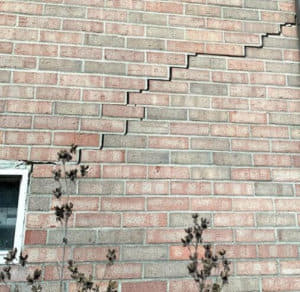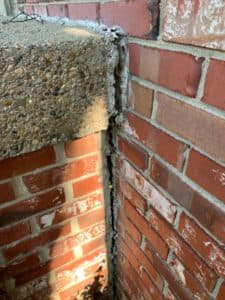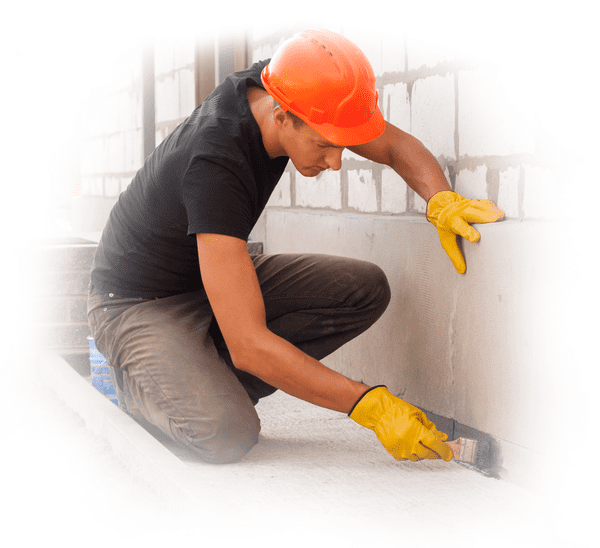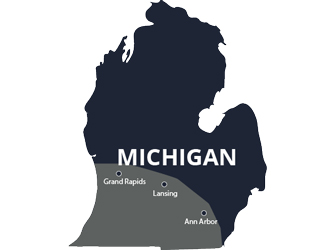Recently, one or our project managers evaluated a home for settling issues. The homeowner had noticed the typical signs of a settling foundation: cracks in the drywall, sticking doors, etc. However, the cause of the settling was not so typical; the house in question was built on top of the remnants of an older home.
This happens more often than you might think. Let’s say there’s a major fire in a house, or a house has been abandoned for a significant period of time. It’s often more economical to tear down the structure and rebuild, when compared to repairing all the damage. But how that rebuilding is done can have a significant impact on the new home’s foundation.
Acculevel is a foundation repair company that restores stability to homes and peace of mind to homeowners. Started in 1996 by Andy Beery, we are a family-owned and operated company serving Indiana and the surrounding areas. Over the years, we have witnessed every kind of foundation and foundation-related issue you can imagine. We want you to benefit from our experience, so you can be better prepared and more knowledgeable when you need home repairs.
In this article, we’re going to explore why and how someone would build a new home on top of an old one. We’ll describe the additional signs of settling you may see and why these occur, and we’ll delve briefly in how to prevent these problems if you are planning to build on an old location.
 This photo was taken by an Acculevel project manager during a free estimate. This exterior crack is a sign of foundation settling.
This photo was taken by an Acculevel project manager during a free estimate. This exterior crack is a sign of foundation settling.
Why Build on an Old Foundation
As they say in real estate: “location, location, location!” I mentioned earlier that sometimes it’s better to tear down a home and start over. This is often the case when a property has been long abandoned or seriously damaged by a fire or other natural disaster.
Anyone who has ever looked for a home starts with a checklist of desirable traits: in a great school district, short driving distance to work, proximity to a golf course or lake, etc. If you found the perfect spot, why wouldn’t you build (or re-build) there?
Of course, there are people who think building on the site of a previous home is bad luck. They’re often the same people who won’t buy a home if someone has died there. I know such superstitious thoughts may sound foolish, but buying a home is an extremely stressful experience, and these ideas can have an effect on a nervous buyer. This is one reason sellers don’t disclose everything about a home or its origins.
How to Determine if Your Home is Built on an Old Foundation
When you buy a home, typically the seller is required to provide you with a disclosure statement. This form varies by state, of course, as do the laws that regulate home sales. Since Acculevel is based in central Indiana, the form referenced is from the Hoosier state.
A disclosure form requires a number of details about the home’s foundation, but none of them specifically ask if it was built on a pre-existing structure. (Indiana also does not require a seller to disclose if a person passed away while living in the home, unless the buyer specifically asks.)
So it is entirely possible that you can buy a home and not know there’s an older structure – or remnants of it- beneath it. If you suspect that your home has a previous foundation below it, you can check with your county clerk’s office or the region’s building inspector. There should be a record of all paperwork filed regarding your property, including liens, building permits, and any legal disputes.
Settling Can be an Ongoing Issue
Any home’s foundation can settle, if the conditions are right. But if there’s an old foundation or its remains under your home, this changes from possible to probable.
This is because your home may not have been built on undisturbed ground. It has been excavated more than once, and this repeated unearthing creates voids (air pockets) in the soil. It’s difficult for a builder to thoroughly and properly compact soil in this situation. Depending on when and how the old building was cleared, there may even be pieces of the earlier home mixed into the earth.
The most common issue you may see is small sinkholes (gaps or holes in the ground) on the property. Sometimes the earth will shift and expose pieces of the block or brick used in the original building. If an occasional sinkhole on your property is the only issue, these can be filled in with soil. The location of the sinkhole is what you need to be cautious with, however. If there are sinkholes next to your home’s foundation, you should have this checked by a professional before filling them in.
If the sinkholes form next to or below your patio or other concrete slab, these will cause the concrete to crack or sink. Filling these gaps with soil will help, but you may still need to have concrete lifting done to hold these slabs in place (in some cases, more than once).
If you have other signs of a settling foundation, you should contact a professional promptly. Foundation repair is NOT a good opportunity for DIY. Your entire home rests on its foundation, and it needs to be a solid and stable base.
 This photo was also taken by an Acculevel project manager. This shows a porch settling and pulling away from the home.
This photo was also taken by an Acculevel project manager. This shows a porch settling and pulling away from the home.
Want to Build on an Existing Home Site?
If you have found your ideal location, and need to demolish an old structure before building your dream home, please take steps to prevent the issues we’ve described. If the old house includes a basement, some builders will suggest filling in the bulk of it, then build your new home with a crawl space on top of it. This is not a great idea. In fact, this kind of shortcut is exactly what creates the issues we’ve described here.
The best option is the reverse: excavate and remove all of the old home’s foundation. If you dig past the original basement or crawl space to undisturbed soil, you will have a much healthier site for your new home.
Does Your Home Have Foundation Issues?
We have developed a foundation repair guide that can be used by any homeowner with questions about their home’s symptoms. You can read the guide in its entirety, or use the table of contents to select the chapter that best meets your needs.
We also have a free tool that will break down potential concerns by symptom: 
If you have seen multiple signs of foundation issues and want to meet with a professional contractor, make sure you verify the company is reputable, insured, and accredited by the Better Business Bureau.
If you live in Indiana or the surrounding states, contact Acculevel. We provide free written estimates that are valid for 12 months and provide some of the best warranties in the industry.. An experienced project manager will evaluate your foundation condition and recommend the best course of action for you, to keep your home strong and healthy for years to come.



















